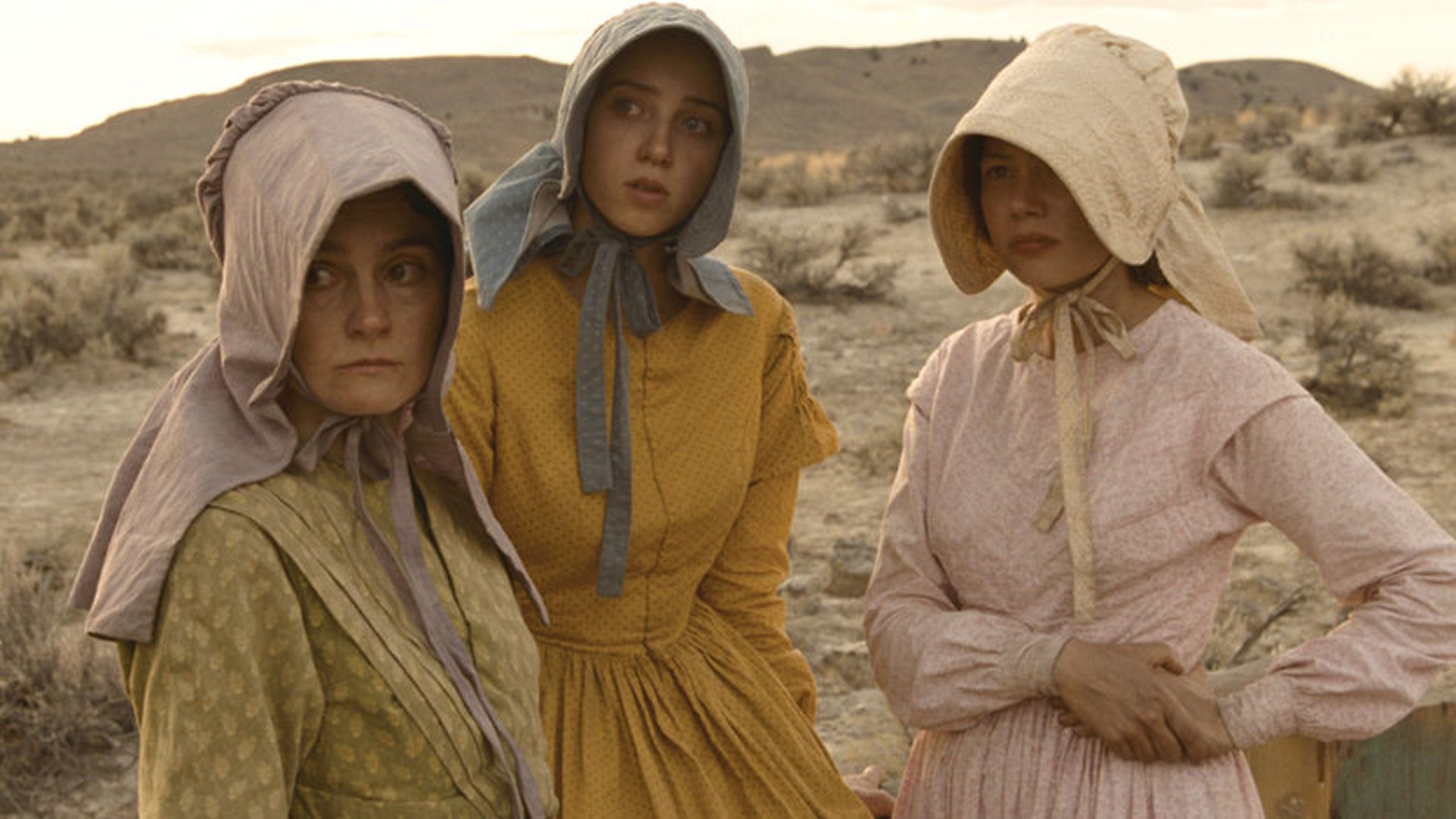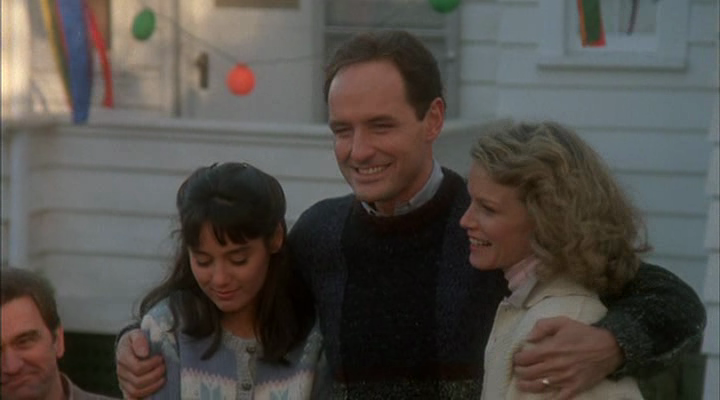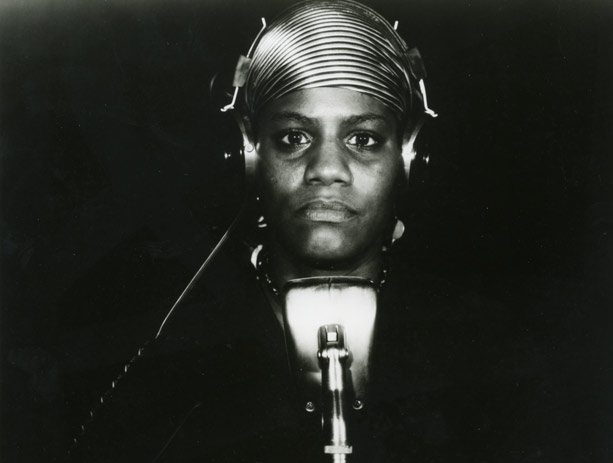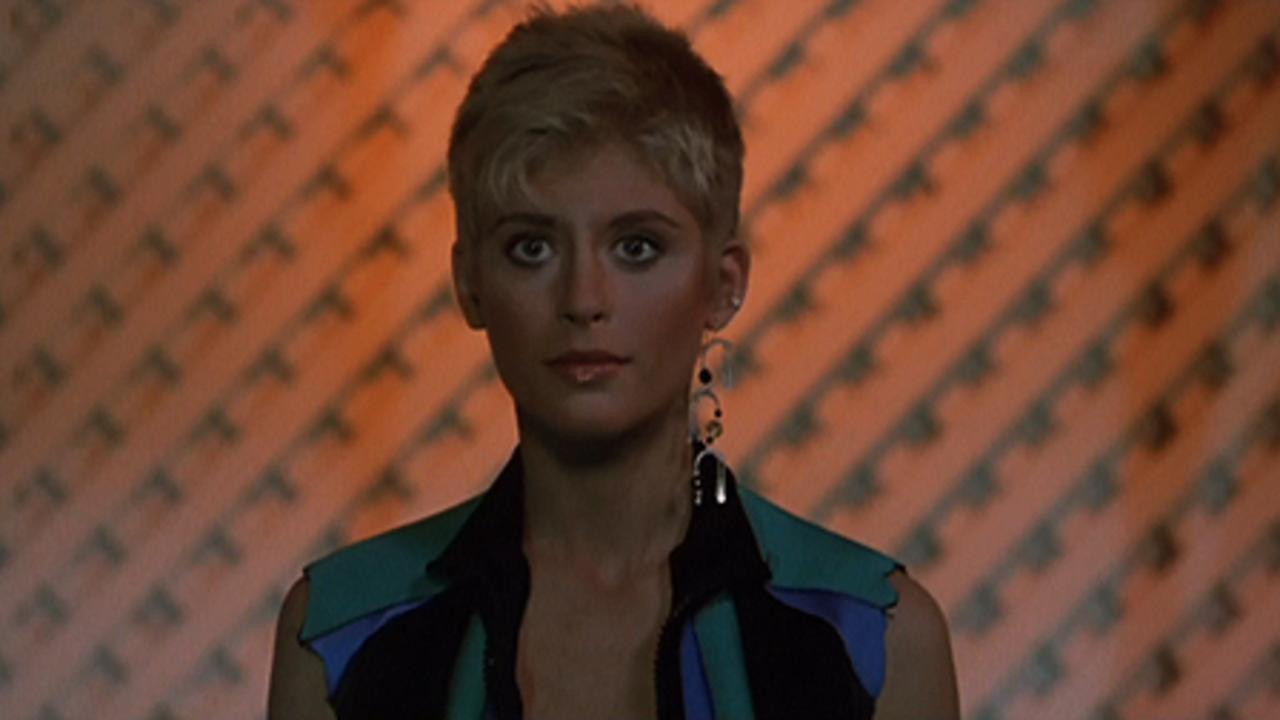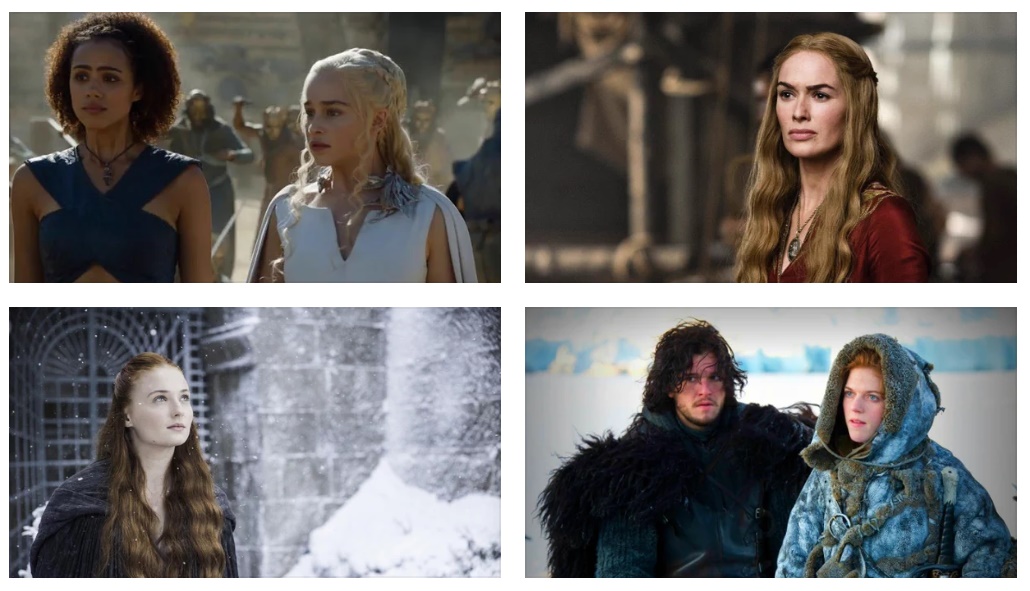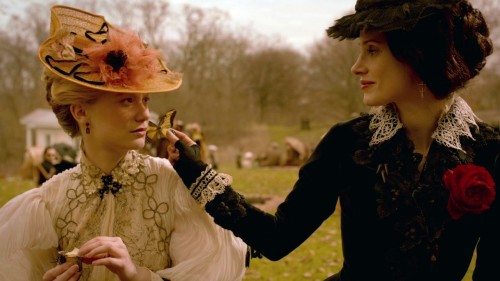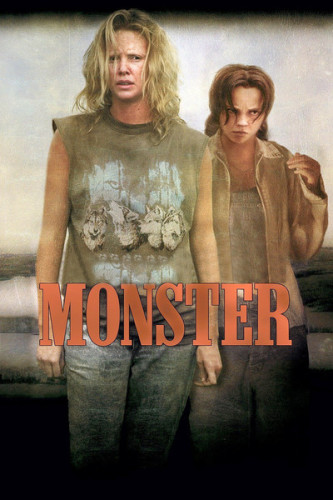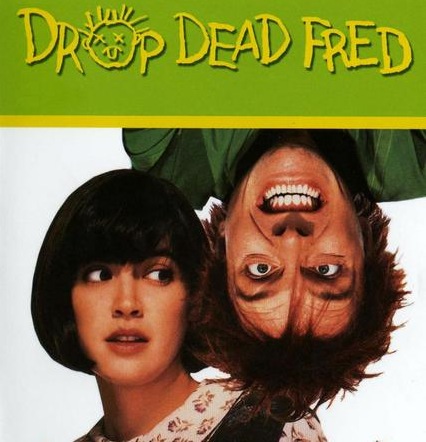This guest post written by E Warren appears as part of our theme week on Women Directors, Part 2.
Somewhere downhill, a short distance away, the men are talking. Their voices tickle the edge of our comprehension. “What are they talking about?” someone asks, “Were you told?” “They’re talking about whether to hang Stephen Meek.” A slight pause, the women on the bluff go back to collecting their kindling. The camera lingers on this image for a while. Later on, we will find out how that discussion in the valley went, one of the men will relay proceedings to us, and we trust that he is being truthful. For now, there’s work that needs doing.
As for Meek himself, it’s widely agreed amongst the characters that he probably deserves his sentence. Having led their caravan on a two-week shortcut, now well into its fifth week, and into territory Meek happily admits is on no map he ever read, the caravan continue marching westward; hoping against hope to blithely stumble their way back into civilization.
Meek’s Cutoff is a 2010 film directed by Kelly Reichardt. Compared at the time to Gus Van Sant’s Death Trilogy, it shares the bleak tone and sparse narrative in its look at the lives of the women on a caravan lost on the Oregon Trail in 1845. With little dialogue, Reichardt relies on the images captured by director of photography Christopher Blauvelt (in their first collaboration) to create a sense of their place in the world.
The film opens on the fording of a river. Observing dispassionately, from a distance, these anonymous figures wade through chest high water, their belongings held above their heads. We wait for someone to fall. Nobody does. The water sounds loud and fierce in our ears, the rickety wagons tremble in the flow. Once all are across, the men sit by the shore planning the way forwards. Everyone seems glad the trial is passed. It is the last running water they’ll see.
Before setting out, the women of the caravan wash clothes at the bank of the river. We see them from beside, behind, above; their bonnets conceal their faces. We see three figures: one pink, one green, one yellow. Eventually their identities are revealed to us: Emily Tetherow (Michelle Williams), Glory White (Shirley Henderson), and Millie Gately (Zoe Kazan). We come to know them by the colors of their dresses long before we get a closer look at their faces. Their names come up only in passing.
It is morning then, and Stephen Meek (Bruce Greenwood) emerges from his tent — Reichardt employs a static camera as we observe the scene. She then creates three shots: the Whites, the Tetherows, the Gateleys. The men are standing, pouring coffee, extinguishing fires. The women are seated, placed towards the back of the compositions, their presence minimized. The caravan sets off and again we see this division. The men lead their oxen while their wives walk a short distance behind, subordinate.
In the American expansion, men gave up their whole lives to head bravely on towards a new west. They would leave their jobs and homes to adventure toward a brighter future. What did women leave behind? The responsibilities of “women’s work” could not be abandoned on the journey. They still were expected to cook, clean, and to rear their children. These women, in their marriage vows, would have promised to love, honor, and obey. Their work never changed, they were just expected to trek as well; Reichardt speaks of the historical sources in this interview with Filmmaker Magazine.
The working woman in Meek’s Cutoff is an isolated one. If at rest she sits, at work she crouches to wash, set fires, and knead dough. In their long calico dresses, it seems an uncomfortable position to be in. In this form, the women are immobilized. For the camera to capture them, it must single them out in the frame, its borders invisible divisions between them. The men debate, their work connects them; we see them huddled together having important discussions. Even the young boy, Jimmy White (Tommy Nelson), is included in these, the camera establishing the patriarchy he’s growing into.
Eventually, the film provides an image of a space for women: a knitting circle. It is quiet, but over half an hour into the film, it is the first time we establish a physical closeness between these female characters. Then Stephen Meek invades; he hijacks the conversation, and with it the frame. Towering over them, they are isolated once again.
Portraying companionship: Emily Tetherow (Michelle Williams) and Glory White (Shirley Henderson) share a rare two-shot.
After the men venture off to find water, Emily encounters a Native American man (Rod Rondeaux, credited as “The Indian”). The film reaches a turning point as she runs to the gun. It is an image we have not been primed for, if a working woman crouches and a resting woman sits, what does this new form mean? Jean-Luc Godard said that all you needed for a movie was “a girl and a gun” (though the credit for this is disputed.) Can culture rationalize an armed man in a way that it finds impossible with an armed woman?
In American society, male gun owners still outnumber women who own guns at a rate of roughly three to one. Culture has established a visual shorthand: the uniformed soldier; the cowboy in a long coat and wide brimmed hat; the suited gangster; the isolated teenager dressed in whatever style is determined “alternative.” We are led to understand the roles these people play, the positions they exist within society. They are all traditionally male figures. Films such as Kathryn Bigelow’s Zero Dark Thirty and Denis Villeneuve’s Sicario are notable for their disruption of these culturally stratified roles, examining how they are inhabited by women. On their own, a woman with a gun seems to signify chaos, as women traditionally have when refusing to occupy their correct position in patriarchal society.
After that subversive act, the film starts to change, a war starts to be waged between Emily Tetherow and Stephen Meek. If neither of them know the way to civilization, or even to water, why should it matter who makes the calls? It extends beyond the caravan to the very structure of the film itself. Emily starts becoming more prominent in the frame, her actions command the edit, and she invades the spaces previously reserved for the men. Reichardt has spent so long defining the character’s role in society that to see her step out of it is arresting.
This change happens in part because of the arrival of another unknown: the Native American man is captured. A vote is taken and the characters choose to leave him alive, hoping he can lead them to water. The man speaks no English and he is a different race than the travelers; he is now the Other and the unknown. The presence of a more notable Other empowers the women — racism becomes a more powerful motivator than misogyny. For this man to have control of the caravan’s direction begins to upset the balance of the white patriarchy, the established order begins to dissolve, yet white supremacy still reigns as he remains captive.
With this shift, so too does the rigid formalism of the cinematography. The previously united caravan falls in on itself; they appear to shrink, consumed by the landscapes they traverse and the crushing darkness of night. Stephen Meek, who previously commanded the frame, loses control of it as the Native American man now takes ownership of it. It is through him that Emily gets to explore her relationship to power, to the film’s lens.
By placing the camera on the kidnapped man, the power the lens can give is also gated. It is then that Emily sets about gaining it. She approaches the man, in the context of the place she must inhabit in this world as a woman. Rather than exhibiting the force that her male companions do, which necessarily comes in opposition, separating them in the frame, she cooks for him and fixes his garments. Their interaction connects them; in the language of the film, the power is shared.
Reichardt has the film take the travelers’ perspective, lost in this unrecognizable territory, the traditional 4:3 aspect ratio constrains our ability to see, much like the bonnets worn by our leads restrict their peripheral vision. The Native American man’s dialogue, spoken in the language of the Nez Perce tribe, is not subtitled. The film is not content to “whiten” the character in order to make him accessible to a modern audience; we are asked instead to understand that his humanity is not a function of his relatability. The history of the United States is inextricable from the subjugation of Native peoples. The film observes the exploitation of this man, of his knowledge. Even Emily, whose relationship to him veers the closest to respect, still operates through the context of subjugation; when she proclaims that he knows there’s water over the next hill, she remains as ignorant of him as her compatriots.
The climax of Meek’s Cutoff comes with guns drawn. Emily defends the man from Meek, the embodiment of the failure of the white supremacist patriarchy. The angle puts the two side by side with Meek, opposing them and creating a barrier between the two forms. When Meek backs down, walks away, the earth tones of his clothes disappear him into the ground. A new order has arisen.
At the film’s close, the man is leading them again, away from the camera; we do not know if they will find water. Their position is not materially any better than it began yet the divisions have fallen. At last, the women and the men appear to be travelling as one. The Native American man, however, is still their captive.
At the time, Meek’s Cutoff was extensively described as an “anti-Western.” Reichardt rejected the label. In an interview with T Magazine, she said, “You know, it’s funny. If you’re not a white, straight man and you show a different point of view in a film, you need a particular category to go into, when it’s just a different point of view.” The history of the American West is just that, regardless of how it has been depicted through the history of cinema.
In reclaiming the era, Reichardt created a representation that centers the experiences of those not served by the traditional Western. A view of the life of women divorced from the patriarchal lens, a view of the treatment of Native Americans divorced from the lens of white supremacy. It may be a different perspective on the Western, but it remains an honest perspective on The West.
E Warren is a writer and actor in the UK. More film and culture writing can be found at their blog A Grand Quiet.
